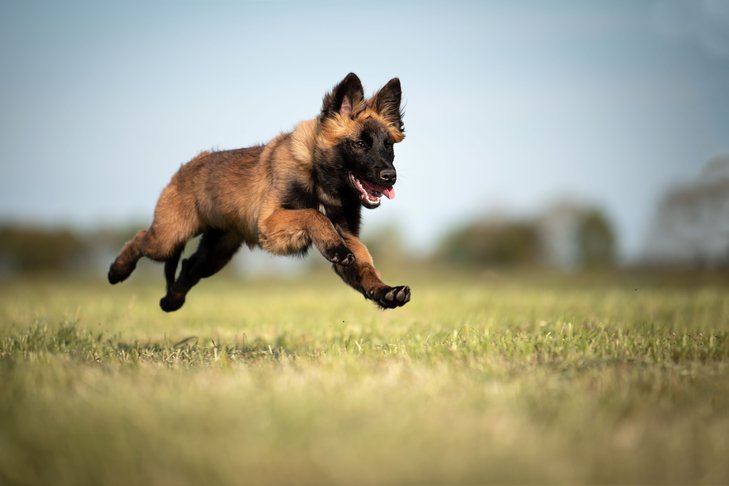Bringing home a new puppy is always exciting—especially when you envision them one day excelling in dog sports like agility, obedience, freestyle, or scent work. If you’re dreaming of raising a future canine athlete, it’s important to remember that while some skills can wait until your puppy matures physically, there’s still a lot you can do right away to lay a strong foundation.
Puppyhood is the golden time to establish the emotional and mental groundwork your pup needs for sports. Think less about physical drills and more about connection, confidence, and curiosity. Let’s explore how to start off on the right paw.
Socialization: The First Crucial Step
Socialization isn’t just a buzzword—it’s the cornerstone of a confident, well-adjusted dog. During the early weeks of life, typically from 7 to 14 weeks old, puppies go through a sensitive developmental period where they’re especially receptive to new experiences.
For future sport dogs, being comfortable in novel environments, around different people, and near other dogs is essential. Begin by gently introducing your pup to new sights, sounds, and surfaces. While avoiding high-traffic areas like dog parks until they’re fully vaccinated, you can still carry them around town, invite safe, puppy-friendly guests over, or take them on car rides.
Most importantly, reward them generously for checking in with you during these outings. A dog that learns to look to you for guidance in busy settings is already ahead in their future sports career.

Play Is Serious Business
If you think playtime is just a fun break from training—think again. For puppies, play is training.
Through play, your puppy learns engagement, impulse control, and handler focus—all key components of competitive dog sports. Playing tug, fetch, or even gentle chase games teaches your dog that interacting with you is the most exciting thing in the world.
Experienced dog trainer Frankie Joiris emphasizes that play is a way to build a deep partnership. “Training is a conversation we share, and they are a partner in,” she says. The better you know your puppy—what motivates them, what toys they prefer, how they like to play—the easier it will be to teach them down the line.
Body Awareness: Building Athletic Intelligence
Dog sports require more than just enthusiasm—they demand body control and coordination. The good news? You can start fostering this early on in age-appropriate ways.
Introduce your pup to different textures, surfaces, and low obstacles. Things like walking across a crinkly tarp, stepping onto a balance disc, or navigating through a small tunnel can build your puppy’s proprioception (their awareness of where their body is in space).
Keep everything low to the ground and low pressure. You’re not training for the Olympics yet—just helping your puppy learn how to move with confidence and control.
Impulse Control and Emotional Self-Regulation
One of the most valuable skills a sports dog can learn has nothing to do with physical prowess—it’s impulse control.
Trainer and Cardigan Welsh Corgi breeder Lori Nichol emphasizes how important this is. “Impulse control and connection with the owner are the foundation for everything—from performance sports to hiking to recall.”
Simple games like “wait for the treat,” “leave it,” or brief leash walking sessions can begin building this. And remember, it’s not about enforcing control—it’s about teaching your pup that they have control, and that making good choices feels great.
This empowerment helps your puppy feel safe, secure, and capable—all traits you want in a dog facing high-energy environments and distractions.
Confidence Through Resilience
Young dogs will occasionally experience something startling or confusing. Helping them bounce back from those moments with curiosity instead of fear is a gift you can start giving early.
Joiris recommends simple activities like knocking over toy bowling pins or playing with toys that make unexpected noises. These controlled, low-stress experiences teach puppies that unfamiliar things aren’t necessarily scary—and that they can affect outcomes with their own actions.
Confidence-building exercises can be done at home, even before vaccinations are complete, laying the groundwork for fearless exploration later on.
What to Delay Until Physical Maturity
While mental and emotional training can begin immediately, not everything should.
Physically intense activities—like jumping, weaving, or sustained jogging—should wait until your dog’s bones and joints are fully developed, which varies by breed but often occurs around 12 to 18 months of age. Overdoing physical activity too soon can lead to long-term orthopedic issues.
Instead of structured walks, let your puppy move freely during supervised play sessions. These natural bursts of activity are great for development without risking injury.

Working with Professionals
Even seasoned dog trainers benefit from puppy classes. Group environments offer valuable exposure to other dogs and people, plus they provide structured time to work on foundational behaviors like sit, stay, and polite greetings.
Choose a trainer who uses positive reinforcement techniques—rewarding good behavior instead of punishing mistakes. This will help preserve your pup’s enthusiasm and build trust in your partnership.
Let Puppies Be Puppies
Perhaps the most important reminder of all: let your puppy enjoy being young.
It’s tempting to dive into structured training with a high-potential sport dog. But Nichol advises a slower, more mindful approach. “People see so much potential and want to push—but the first year to year and a half should be about letting the puppy set the pace.”
Your puppy will only be little once. Focus on joy, exploration, and connection now. The serious training can wait—and it will go much smoother thanks to the playful, trusting relationship you’ve built.
In Summary
Training a puppy for dog sports isn’t about rushing toward ribbons and titles. It’s about nurturing a well-rounded, confident, and connected companion who loves learning with you. By focusing on socialization, play, impulse control, and resilience, you’re not just raising a competitor—you’re raising a partner. Let your puppy lead the way, and enjoy the journey together.


